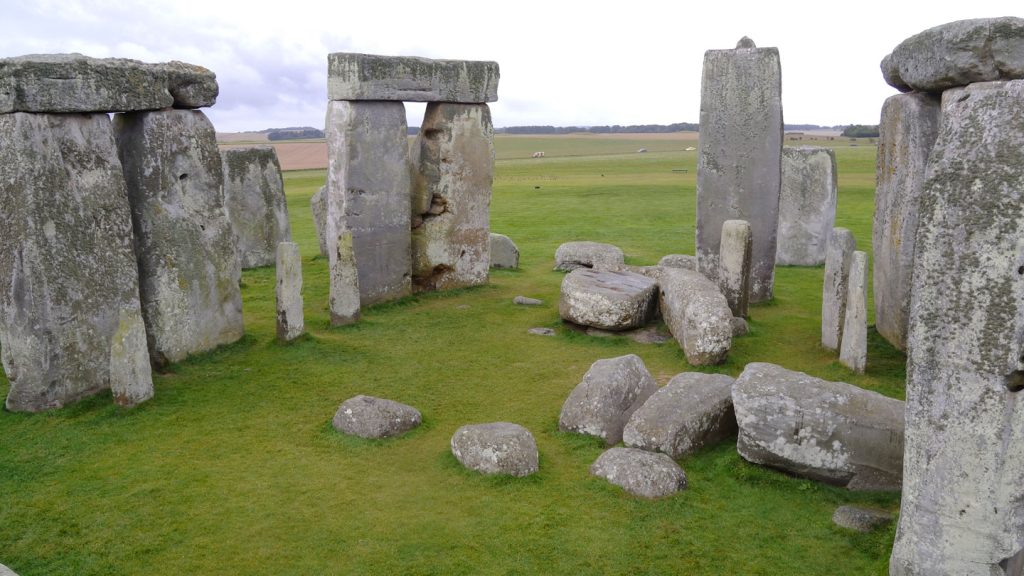Ancient Discoveries Shed Light on Human History:
The year’s archaeological findings have unveiled a treasure trove of insights into the lives, practices, and societies of our ancestors. From preserved brains that offer glimpses into the past to the intricate artistry of ancient cave paintings, these discoveries reshape our understanding of human history. One remarkable find is an archive cataloging over 4,400 ancient brains preserved through various means such as drying, freezing, or other natural processes. This unexpected durability is attributed to the unique chemical composition of the brain. The discovery of these preserved organs allows researchers to delve deeper into the neurological aspects of our ancestors, potentially revealing insights into cognitive abilities and evolution.
The artistic expressions of ancient civilizations continue to captivate researchers. In Argentina, cave paintings dating back approximately 8,200 years have been identified as the oldest rock art in the Americas, surpassing previously known examples by several millennia. Located in Cueva Huenul 1, these paintings depict a rich tapestry of geometric shapes, human figures, and animals, suggesting their potential role in preserving cultural knowledge across generations of hunter-gatherer societies. These artistic endeavors offer a window into the symbolic language and worldview of early humans in the Americas.
Genetic studies have unveiled significant migrations that shaped the genetic landscape of Europe. The Yamnaya herders, originating from southwest Asia, migrated to Europe around 5,000 years ago, leaving a lasting impact on the genetic makeup of European populations. This migration is linked to traits such as taller stature and lighter skin in northern Europeans, as well as increased susceptibility to multiple sclerosis. Eastern Europeans, on the other hand, may have inherited a Yamnaya gene variant associated with Alzheimer’s disease. These findings illustrate the complex interplay between migration, genetics, and human health.
Unveiling Ancient Practices and Societal Structures:
Archaeological investigations have provided valuable insights into the daily lives and occupational hazards faced by ancient Egyptians. The skeletons of scribes buried at the Abusir pyramid complex reveal signs of arthritis and other skeletal damage resulting from prolonged periods of poor posture while working with scrolls. These findings shed light on the physical demands and potential health consequences associated with specific occupations in ancient societies. Similarly, the catastrophic eruption of Mount Vesuvius in A.D. 79, which decimated Pompeii, has been re-examined. Studies of collapsed buildings and crushed skeletons indicate that the destruction was even more devastating than previously thought. The eruption triggered powerful earthquakes that toppled structures, adding to the already lethal combination of hot gas, ash, and rock that engulfed the city.
The origins of the enigmatic Altar Stone at Stonehenge have been traced to Scotland, challenging previous assumptions about its Welsh origins. The stone’s mineral composition closely matches that of the Orcadian Basin, a Scottish rock formation. This discovery highlights the extensive network of interactions and material exchange that existed in prehistoric Britain. Moving to the Americas, DNA analysis has revealed that child sacrifices in a Maya burial chamber on the Yucatán Peninsula exclusively involved young boys, challenging the previous theory that women were sacrificed in fertility rituals. These sacrifices, likely performed to appease a rain god, offer a glimpse into the religious practices and beliefs of the Maya civilization.
Technological Advancements and Societal Complexity:
Laser scanning technology has unveiled the remnants of a lost city in the Amazon, revealing the earliest and largest known urban complex in the region. Located in Ecuador’s Upano Valley, this city, inhabited from roughly 500 B.C. to A.D. 1500, showcases the sophistication and complexity of Amazonian civilizations long before European contact. The city boasts thousands of mounds that once housed homes and community spaces, along with remnants of roads and farms, demonstrating advanced urban planning and agricultural practices. This discovery challenges previous assumptions about the development of complex societies in the Amazon.
In a rare instance of fruitful social media exploration, a researcher identified part of a lost civilization’s alphabet in a photo of an engraved slate posted online. This slate, originating from the Tartessos civilization that vanished in the fifth century B.C., bears a writing system linked to the Phoenician alphabet, which in turn influenced Latin, Spanish, and English writing. This discovery offers a valuable glimpse into the language and communication systems of this enigmatic civilization. In Morocco, analysis of 15,000-year-old human bones and teeth reveals that the Iberomaurusians, a group of Stone Age hunter-gatherers, maintained a predominantly vegetarian diet without engaging in agriculture. This challenges the traditional notion that plant-based diets inevitably lead to the development of agriculture, highlighting the diversity of subsistence strategies employed by ancient humans.
Challenging Established Narratives:
The conventional narrative surrounding the collapse of the Rapa Nui civilization on Easter Island has been challenged by recent research. Contrary to the popular belief of a population boom leading to ecological devastation, ground surveys and satellite data suggest that the Polynesian settlers, who arrived around 800 years ago, established a sustainable farming system and maintained a stable population of less than 4,000 until European arrival 300 years ago. This challenges the prevailing narrative of ecological collapse and highlights the potential for sustainable practices in ancient societies. These diverse archaeological discoveries collectively reveal the complexity and richness of human history, challenging established narratives and enriching our understanding of past civilizations. From the intricacies of ancient brains to the sophisticated urban planning of lost cities, these findings illuminate the diverse paths taken by our ancestors and provide valuable insights into the human story.















